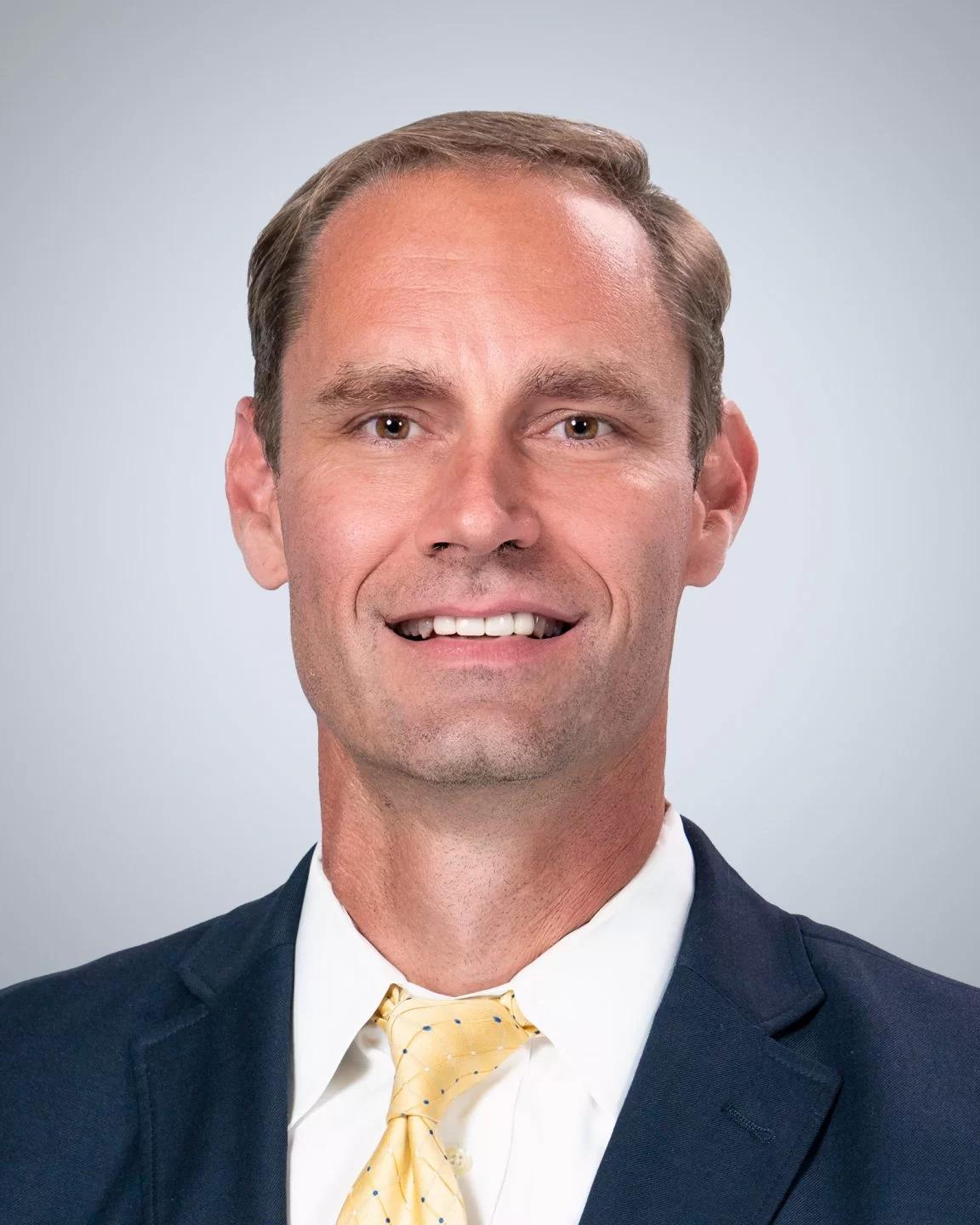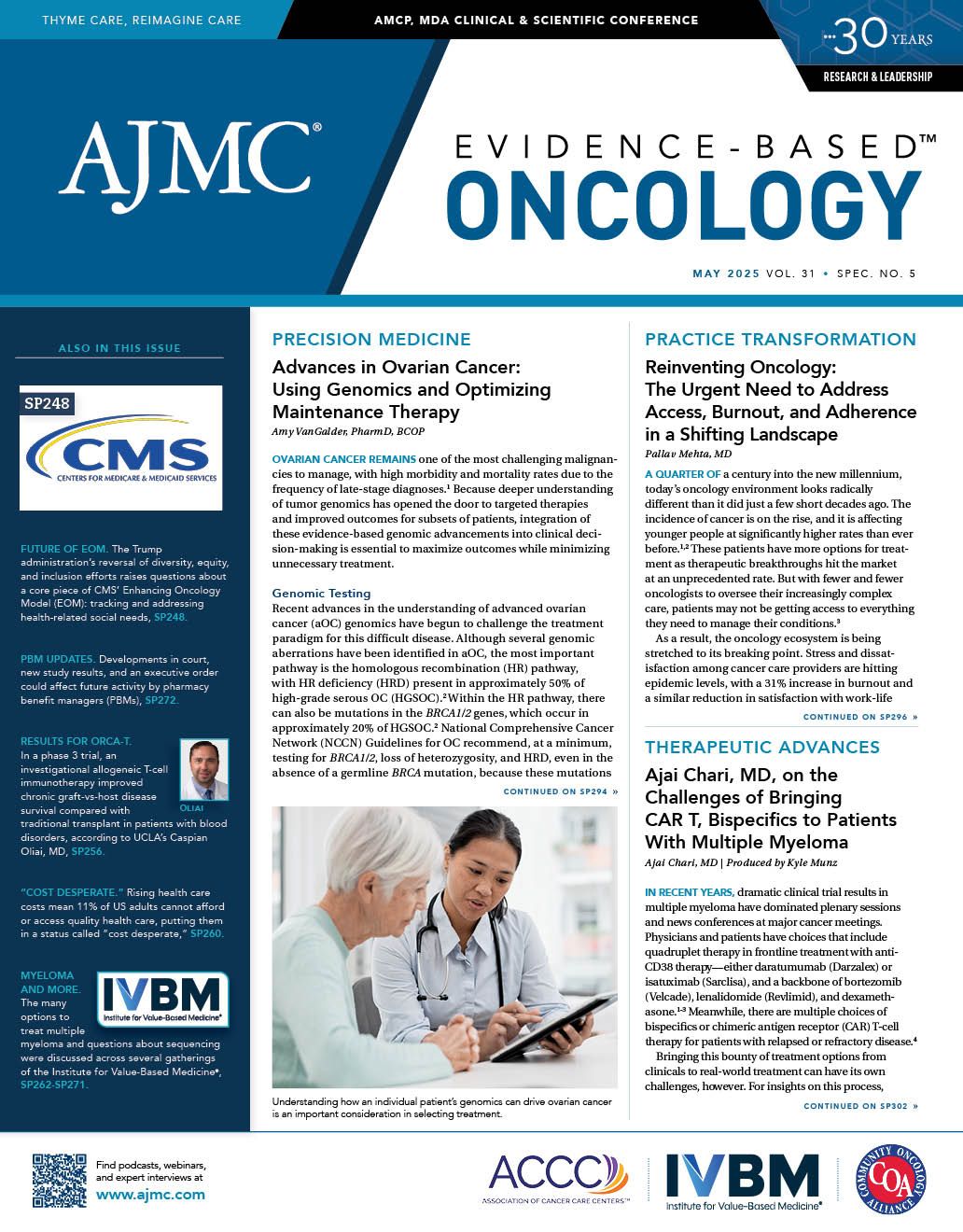- Center on Health Equity & Access
- Clinical
- Health Care Cost
- Health Care Delivery
- Insurance
- Policy
- Technology
- Value-Based Care
With Thyme Care Partnership, AON Achieves $6M in Savings in EOM’s First Performance Period
The American Oncology Network (AON) achieved savings of nearly $6 million for Medicare during the first performance period of the Enhancing Oncology Model (EOM), the alternative payment model (APM) that launched July 1, 2023.
AON leaders announced the results early today in partnership with Thyme Care, a value-based care enabler that helps oncology practices achieve savings and practice transformation benchmarks through patient navigation, palliative care, reduction of waste, and other innovations.
In addition, AON earned a performance-based payment, which is 1 of 2 reimbursement pieces available to practices under the EOM. Performance-based payments allow practices to share in the savings achieved for Medicare. Unlike CMS’ first oncology model, all practices in the EOM operate at risk, which means if they fall short of certain savings benchmarks, they may have to repay funds to Medicare.
Stephen "Fred" Divers, MD | Image: AON

“Our first performance period in the EOM yielded a positive outcome, validating our approach to value-based cancer care and demonstrating the strength of our leadership team, clinic staff, and partnership with Thyme Care,” AON Chief Medical Officer Stephen “Fred” Divers, MD, said in a statement early today. “This achievement reinforces AON’s leadership in alternative payment models, and we’re excited to implement new strategies to further enhance our performance in future performance periods.”
In the statement, AON leaders said the results build on the success seen under the Oncology Care Model (OCM), the predecessor to EOM that CMS retired in June 2022.
“AON practices saw significant improvements in patient outcomes and a 2.6% decrease in expenditures compared with other OCM participants,” the statement said. “Now in the EOM, AON practices represent approximately 10% of the total EOM population, highlighting the network’s leadership in advancing value-based oncology care.”
Today, AON supports 290 providers in 21 states; its unique, unified structure allows practices to enroll in the model under a single tax ID number, “which means all of its locations are participating in the EOM program,” Lalan Wilfong, MD, senior vice president of value-based care for Thyme Care, said in an email.
Lalan Wilfong, MD | Image: Thyme Care

“This comprehensive participation allows us to gather robust data and implement standardized approaches to value-based care delivery throughout AON’s entire network,” he said. In addition, AON operates on a single information technology platform, which, Wilfong said, “enables us to function seamlessly regardless of geographic location. This unified structure is a significant advantage in implementing consistent value-based care approaches.”
In today’s statement, AON and leaders from Thyme Care attributed their success to 4 key drivers:
- Pharmacy interventions, which allowed oncology practices to tackle the most costly part of cancer care. In their statement, AON and Thyme Care said the network’s oncologists and pharmacists implemented a series of “data-informed, patient-centric” interventions to minimize drug waste and make therapeutic substitutions “that reduced costs while maintaining clinical efficacy and improving adherence.”
- Comprehensive care navigation, in which AON practices received support from Thyme Care’s 24/7 virtual care navigation team, including oncology nurses, social workers, and navigators who manage logistics and address clinical, emotional, and health equity needs. All patient interactions are documented and shared across care teams, leading to improved outcomes and care experience.
- Real-time performance data, which allows AON and Thyme Care to capture data from electronic health records, electronic patient-reported outcomes, admission-discharge-transfer feeds, and claims data to quickly find pain points and address them, reducing unnecessary hospitalizations and trips to the emergency department (ED).
- Virtual palliative care support, which offers patients and caregivers “an additional layer of support throughout the cancer journey.” Thyme Care investments in palliative care allow better management of physical and psychological symptoms, and care decisions are aligned with individual goals and values.
Of note, the estimates that AON and Thyme Care had calculated for Medicare savings were within 1% of what CMS reported. “The alignment between our real-time analytics and the official results validates our data-driven approach,“ Wilfong said. “The accuracy of our internal estimates compared to the official CMS figures demonstrates the effectiveness of our analytics capabilities.”
The CMS Innovation Center, which operates the EOM, provided practices in the model with results from their first performance period on February 28, 2025. Earlier this month, CMS told The American Journal of Managed Care® in an email that the agency will offer additional details on these results at a later date.
In addition to performance-based payments, EOM practices receive monthly payments for each patient receiving care; these funds are designed to support services such as navigation and advanced care planning required under the model. Monthly payments started out at less than half what they were under the OCM but have since been increased.
AON providers represent 1 of the 44 practices that signed on for the EOM at its launch. Today, 36 practices and 2 payers remain in the model, according to the EOM website. In the early going, EOM’s predecessor model, the OCM, also saw practices drop out after the first year, although there were still 122 practices enrolled when CMS retired the model.
Asked which savings drivers worked best for AON, Wilfong said 2 large “buckets” of savings were targeted: acute care utilization and drug spend. The first improves patient care while reducing preventable ED visits and hospital stays.
“We accomplish this through our care team management approach and by coordinating with AON’s local care team, using proactive patient outreach to address symptoms and other barriers to care, such as transportation challenges,” Wilfong said. “This allows patients to seek care early, before their conditions worsen to the point of needing emergency intervention.”
Second, with many cancer drugs listing at more than $100,000 a year, reducing drug waste has been an essential piece of Thyme Care’s approach.
“These interventions include drug waste minimization strategies and therapeutic substitutions that reduce costs while maintaining clinical efficacy and improving medication adherence,” Wilfong said.
“Both approaches have generated significant savings, but our comprehensive care navigation system that prevents avoidable acute care has been particularly impactful in terms of both cost reduction and improved patient outcomes,” he said.
Bobby Green, MD, MSCE | Image: Thyme Care

"We are incredibly proud of our achievements in the first performance period of this program," Bobby Green, MD, MSCE, cofounder, chief medical officer, and president of Thyme Care, said in the statement.
"We built the right systems, processes, and infrastructure from the ground up to support patients with 24/7 care, address their social needs, and use data to drive improvements. Collaborating with the AON team and combining their clinical expertise with Thyme Care’s technology and services enabled us to succeed in the EOM and deliver meaningful impact to patients. As we move forward together, we’re confident we’ll continue to improve both quality and costs."
Thyme Care supports 800 oncologists in their collaborations with payers and employers to reduce the total cost of cancer care through Thyme Care Oncology Partners.
Reference
American Oncology Network achieves success in first performance period of CMMI’s Enhancing Oncology Model. News release. American Oncology Network; April 22, 2025. Accessed April 22, 2025. https://www.aoncology.com/2025/04/22/american-oncology-network-achieves-success-in-first-performance-period-of-cmmis-enhancing-oncology-model/

